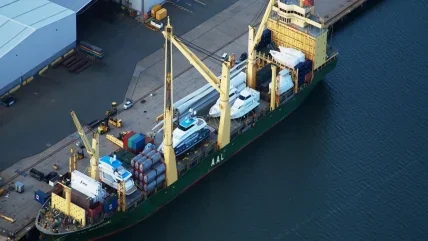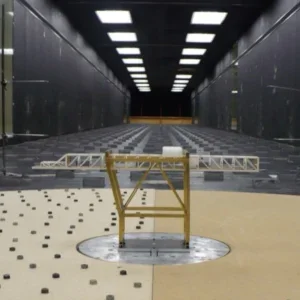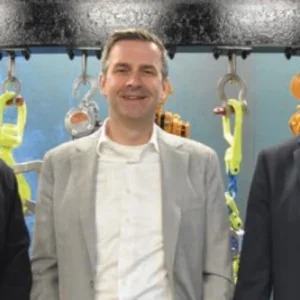
AAL Shipping transported eight giant juice tanks from Taicang Port in China to Setúbal in Portugal, 50km south of Lisbon, earlier this year.
Carried on its AAL Kobe heavy lift vessel, the cargo is being used for a vessel conversion at Lisnave Shipyard, where they will be installed onto a bulk carrier, transforming the vessel into a fruit juice tanker.
The 15-ton tanks, each measuring 12x12x16.5m, were stowed on deck and posed visibility restrictions on the journey.
“We initially had to ensure a specially designed lifting beam could, in fact, be aligned, connected, and lifted without mechanical support from the weather deck of the AAL Kobe to the tanks’ trunnions located at 12m height. Thanks to both the vessel’s outstanding crane height and tailormade lifting beam, we were able to stow the units successfully on deck,” said Yahaya Sanusi, deputy head, transport engineering, AAL.
“The goalposts then changed midway through the project, when our initial discharge to quayside plan was replaced by a more ambitious proposal, involving the discharge of the heavy lift units directly to the soon-to-be-converted bulk carrier. After extensive modelling and risk assessment by our engineering team, the original plan was reinstated.
“We also had to overcome a very shallow vessel draft and other operational restrictions at port of discharge using extensive modelling, bathymetric surveys, and tides, mooring, and risk analyses. This provided the data and operational transparency required for AAL to handle the tanks safely using only the ship cranes. All plans were carefully screened and approved by not only the local port authority, but also insurers and other project stakeholders.”
Christophe Grammare, MD, AAL, added: “We’ve boosted our engineering and operations capability across all key markets and time zones, and that is well demonstrated on this… project, when rapidly changing operational criteria and local restrictions needed to be addressed at a local level and smartly.”






